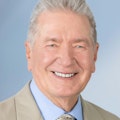Why solo group arrangements for dental practices make sense ... sometimes
Solo group arrangements for general practices and some specialty practices remain an underutilized alternative for dental partnerships. Partnerships almost always require that Dr. Junior buy both the first, and later, the second half of Dr. Senior’s practice.
Assuming that Dr. Junior is practicing at full capacity when Dr. Senior is ready to retire, Dr. Junior may not want to be obligated to buy the second half of the practice because Dr. Junior is already at full capacity. A solo group arrangement solves this problem because the two doctors maintain separate practices in the same facility, and there is no mandatory buyout of Dr. Senior by Dr. Junior.
Associate employment in a solo group arrangement
Dr. Junior initially joins the practice as an associate dentist under an associate employment agreement whereby the parties can assess their compatibility. Under the same timing as becoming a partner in the practice, and under a solo group arrangement, Dr. Junior purchases his or her patient base and a 50% undivided interest in the tangible assets of the practice.
The associate’s patient base consists of those patients customarily treated by the associate for a predetermined length of time as designated in the associate employment agreement. The patient base is tracked and continually updated. The goodwill value of the associate’s patient base is calculated and based on a predetermined valuation formula. The tangible assets are also determined by the practice’s dental equipment and supply company or by a predetermined formula.
In a solo group, the original owner’s practice can be sold to an existing third dentist or an unrelated third party if the younger solo group member does not exercise the option to purchase within a short notice period. Here, the third dentist or any other dentist is not required to become a partner with Dr. Junior and maintains a separate practice. In addition, the complex issues of tax structures for partnerships are completely avoided.
Office sharing agreement
Each practice operates separately in the same facility and employs the staff, to the extent not shared, bills its own patients, and pays the applicable share of operating expenses. Each practice operates under the terms of an office sharing agreement in accordance with predetermined common policies, dispute resolution provisions, and expense-sharing allocations. Expense-sharing allocations are equally shared or allocated based on collections or production of one solo group member as a percentage of all solo group members.
Due to the square footage of the facility when it’s constructed, most offices cannot accommodate more than three dentists on a full‑time basis. There are exceptions where larger groups are anticipated, but the larger the facility, the greater the chance for underutilization, which can substantially reduce profitability.
Buy-sell agreement
A buy-sell agreement that grants the option of the solo group member to purchase the practice of a retiring or departing solo group member should be in place. If the option is not exercised in a short time, the original owner may sell his or her practice to any dentist licensed in the applicable state under the terms of the office sharing agreement and buy-sell agreement with the new owner.
If the new owner wants or is required to leave the premises in the event of a dispute, the buy-sell agreement provides that the new owner will be permitted to remove their patient charts, retain their telephone number, website, and domain names, and remove their personal property, dental equipment, and technology. The new owner would also receive the fair market value of any jointly owned equipment and technology as determined by a formula in the buy-sell agreement. Dental supplies and instruments would also be considered in this formula if shared but are usually owned by the respective practices.
Shared dental practice employees
In a solo group, each dentist can share certain employees. Notwithstanding, be cautious about sharing front desk personnel due to potential scheduling priorities. Typically, the original owner’s practice pays the shared staff to the extent worked for the new owner’s practice, and the new owner’s practice reimburses the original owner’s practice for the pro rata cost.
Retirement plans and health insurance
Unlike any of the three business and tax structures of partnership, solo group arrangements permit the practices to maintain separate retirement and health plans. To the extent that employees are shared, the prorated benefits are reimbursed by the new owner’s practice or the original owner’s practice. Benefit design is significant because the original owner and the new owner may have significant differences in retirement and health plan coverages.
To summarize
Solo dental groups provide a good alternative to partnerships because Dr. Junior is not obligated to buy out Dr. Senior, who can sell to an existing third dentist or an unrelated third party. In addition, the difficult tax effects under the three business and tax structures of partnerships are completely avoided.
Solo group arrangements work well when there is no obligation for Dr. Junior to buy out Dr. Senior. When the obligation for a mandatory buyout is in place, the parties should use one of the forms of partnership.
Editor's note: This article originally appeared in DE Weekend, the newsletter that will elevate your Sunday mornings with practical and innovative practice management and clinical content from experts across the field. Subscribe here.
About the Author

William P. Prescott, JD, EMBA
William P. Prescott, JD, EMBA, of Wickens Herzer Panza in Avon, Ohio, is a practice transition and tax attorney, as well as a former dental equipment and supply manager and representative. His most recent book, Joining and Leaving the Dental Practice, 4th edition, is available through the ADA Center for Professional Success. ADA members can download the e-book for free at ada.org/prescottebook. For this and Prescott’s other publications, visit prescottdentallaw.com. Contact him at (440) 695-8067 or [email protected].


